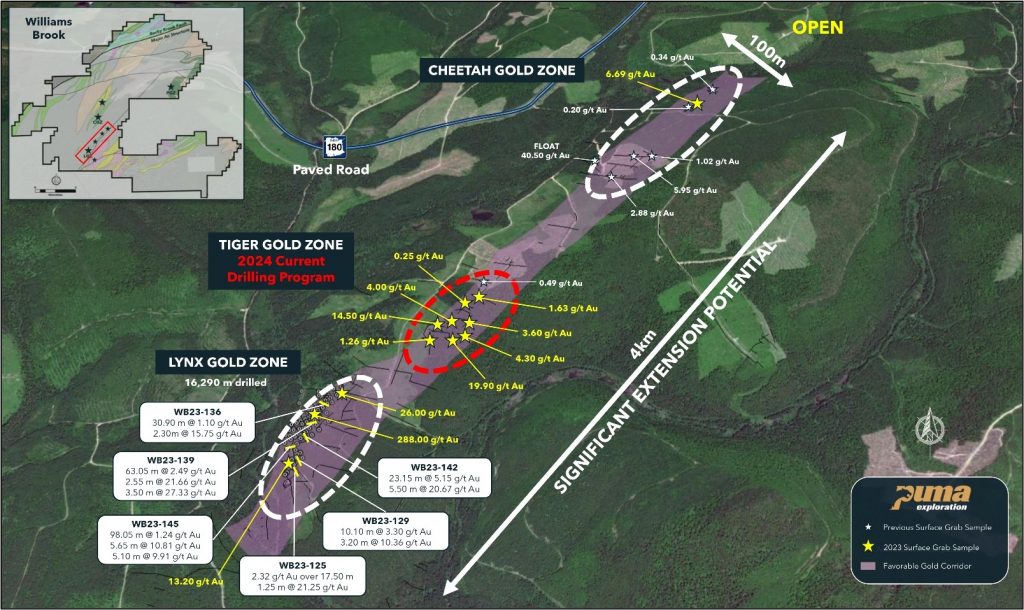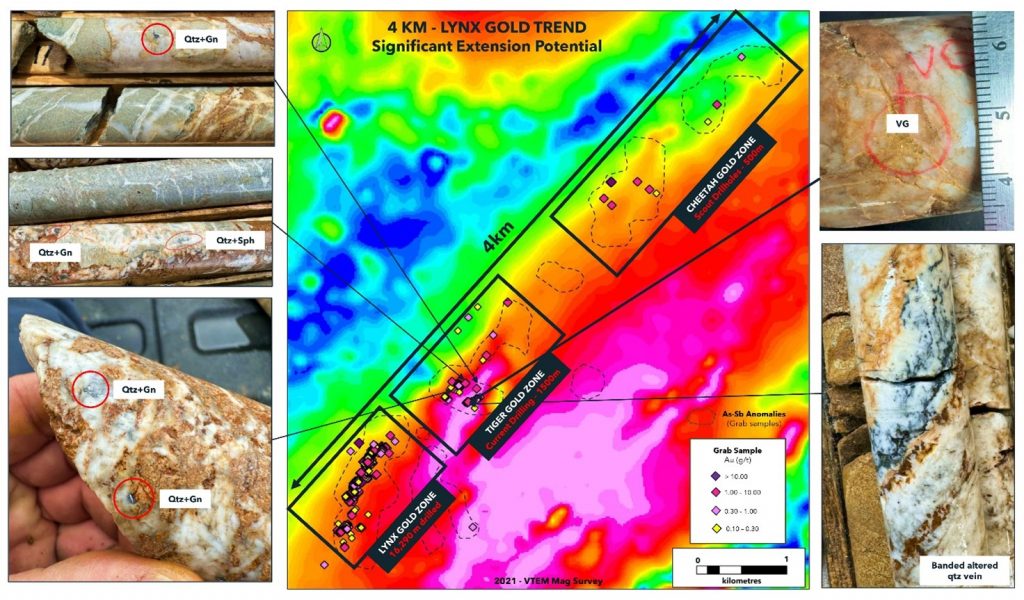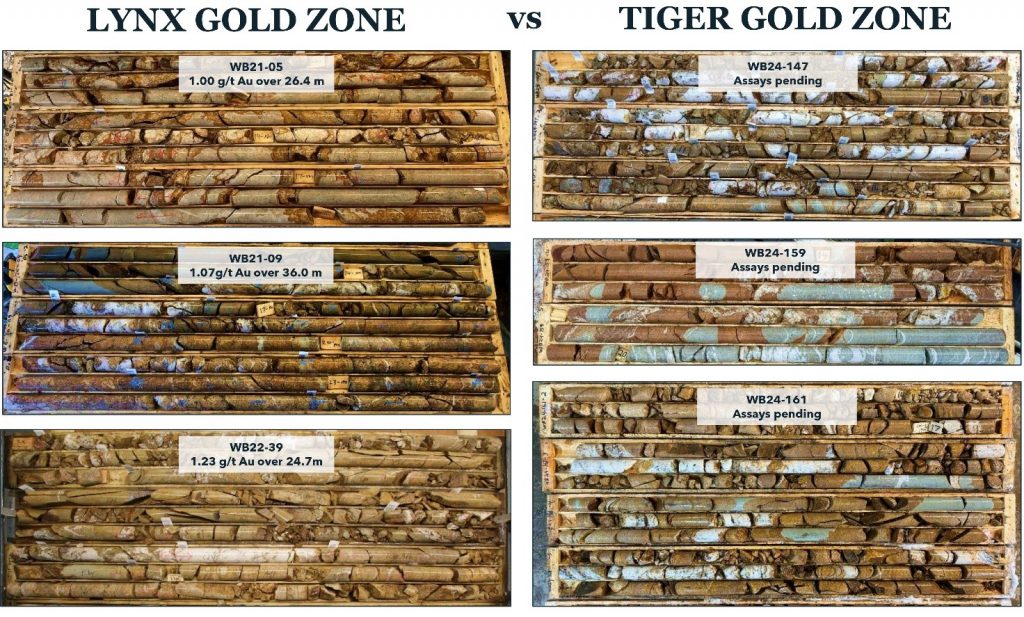
Puma Exploration (TSXV:PUMA) recently shared updates on its drilling activities at the Tiger Gold Zone (TGZ) within the Williams Brook Gold Project in Northern New Brunswick. The company owns 100% of this project and has initiated a 2,000 meters drilling program targeting the gold zone discovered last year. The aim is to explore the northeast extension of the gold mineralized corridor from the Lynx Gold Zone (LGZ) over a 1.5 km stretch and to potentially widen this zone. Initial observations from the drilling cores have been positive, leading to an expansion of the drilling program.
Marcel Robillard, President and CEO of Puma Exploration, commented in a press release: “We are thrilled with what we see in the first 800 metres drilled so far at Tiger. The core exhibits the same pervasive alteration and mineralization characteristic of the Lynx Gold Zone. This further supports our belief that we are dealing with a large gold system and that the Lynx Gold Zone extends at least 1.5 kilometres along strike. Following these observations, we have expanded our drilling program by adding scouting drill holes along another 2-kilometre extension. With our exploration program fully funded, our focus is to grow the scale and resource along the Lynx Gold Trend in 2024.”
The drilling at TGZ is designed in a shallow fan pattern to examine the mineralization beneath the surface gold veins, which were identified through trenching and mapping in the previous year. This effort seeks to understand the factors controlling gold mineralization in the area and how the TGZ integrates into the company’s existing structural and lithological models. It’s important to note, however, that grab samples, which are part of the exploration process, are selective and might not accurately reflect the overall metal content of the mineralized zones.

Previous geophysical and geochemical surveys have pointed out several target areas along the Lynx Gold Trend. Limited trenching conducted by earlier operators followed these surveys. Last year, Puma uncovered another promising gold area named the Cheetah Gold Zone (CHGZ), revealing 6.69 grams per tonne (g/t) gold from its initial trenching and sampling.
The TGZ, located 350 meters from the LGZ, was expanded through surface exploration work along the Lynx Gold Trend in 2023. This work confirmed gold mineralization over a stretch exceeding 1.5 km, with four significant mineralized quartz veins yielding high-grade gold results, including assays of 19.90 g/t and 14.50 g/t gold. These findings confirm the continuity of high-grade gold mineralization within the hydrothermal alteration corridor observable at the surface. The exploration program has also verified that the gold mineralized corridor extends to shallow depths at Tiger, remaining open along its strike and depth.
The area of the Tiger Gold Zone now covers 400 meters by 180 meters. Gold here is primarily found in quartz veins, which range from drusy to massive, and are accompanied by minor carbonate and sulphides like chalcopyrite, sphalerite, galena, and malachite. This mineralization pattern is similar to the high-grade veins previously discovered at the Lynx Gold Zone. Notably, these quartz veins are located at the juncture between different rock types, including volcanic and sedimentary units and a significant mafic unit, indicating a complex geological setting conducive to gold deposition.

Highlights from the results are as follows:
- Fifteen (15) holes with depths from 25 to 150 m have been completed for a total of 875 metres.
- The holes were drilled 425 metres from the Lynx Gold Zone (Figure 1).
- All holes intersected the targeted favourable gold-bearing horizon of quartz veins / stockwork in altered sediment and gabbro units.
- Visible gold was observed in hole WB24-151 in a quartz vein in altered gabbro (Figure 2).
- The same pervasive alteration corridor characteristic of the LGZ is observed at Tiger (Figure 3).



 Follow us on Twitter
Follow us on Twitter Become our facebook fan
Become our facebook fan










Comments are closed.